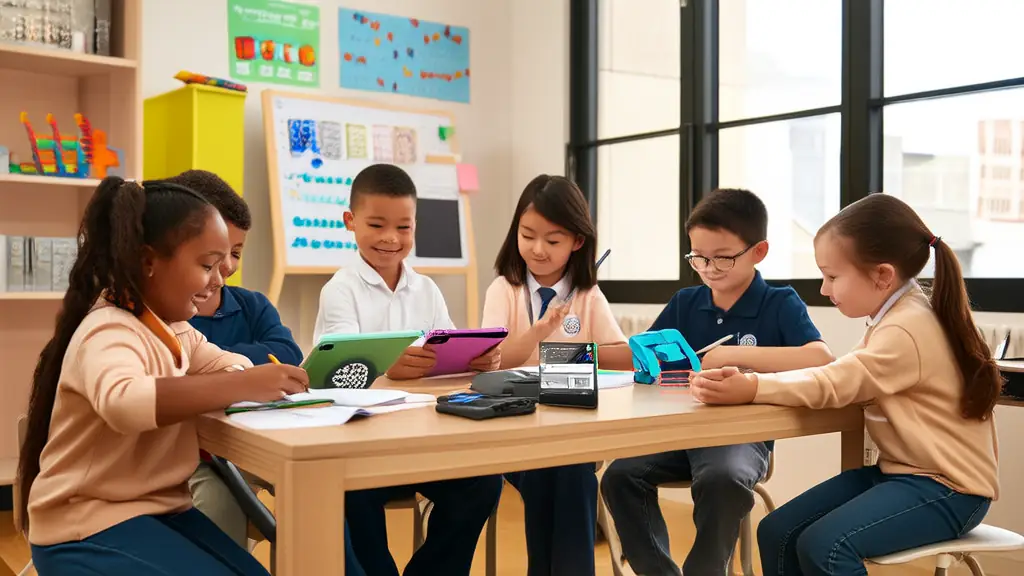
Empowering the Future: Navigating K-12 Education in 2025
As we step into August 2025, the landscape of K-12 education is more dynamic and innovative than ever before. Parents and educators are at the forefront of this transformation, constantly seeking new ways to enhance learning experiences for students. This blog post will explore the latest teaching methodologies, child development insights, educational technology trends, and provide practical tips that can make a significant difference in the classroom and at home. Let's dive in!
Latest Teaching Methodologies and Their Effectiveness
The traditional one-size-fits-all approach to teaching is giving way to more personalized and engaging methods. One of the most promising methodologies is Project-Based Learning (PBL). PBL encourages students to tackle real-world problems through hands-on projects, fostering critical thinking, collaboration, and creativity. For example, a group of 8th graders in California designed a sustainable community garden, integrating lessons from biology, math, and social studies. The project not only deepened their understanding of these subjects but also taught them valuable life skills.
Another effective method is Flipped Classrooms, where students watch video lectures or read materials at home and use class time for interactive activities and discussions. This approach has been shown to improve student engagement and comprehension. A high school in Texas implemented flipped classrooms and saw a 15% increase in student performance on standardized tests within a year.
Child Development Insights and Research
Recent research in child development emphasizes the importance of social-emotional learning (SEL). SEL helps students develop self-awareness, self-management, social awareness, relationship skills, and responsible decision-making. Schools that integrate SEL into their curriculum have reported lower rates of disciplinary issues and higher academic achievement. For instance, a study by the Collaborative for Academic, Social, and Emotional Learning (CASEL) found that students who participated in SEL programs showed an 11% gain in academic performance compared to their peers.
Additionally, play-based learning is gaining recognition as a crucial component of early childhood education. Play allows children to explore, experiment, and learn in a natural and enjoyable way. A kindergarten in New York City adopted a play-based curriculum and observed significant improvements in language development, problem-solving skills, and emotional regulation among its students.
Educational Technology Trends
Technology continues to revolutionize the K-12 education space. Artificial Intelligence (AI) is being used to personalize learning experiences. AI-powered platforms can adapt to each student's learning pace and style, providing tailored content and feedback. For example, DreamBox Learning, an adaptive math program, has helped thousands of students across the U.S. achieve measurable gains in math proficiency.
Virtual Reality (VR) and Augmented Reality (AR) are also making waves in the classroom. These immersive technologies bring abstract concepts to life, enhancing understanding and retention. A middle school in Ohio used VR to take students on a virtual field trip to the Great Barrier Reef, allowing them to experience marine biology in a way that textbooks alone cannot provide.
Practical Tips for Parents and Teachers
For parents, staying involved in your child's education is key. Here are some actionable tips:
- Communicate regularly with teachers: Stay informed about your child's progress and any areas where they may need extra support.
- Create a dedicated study space at home: A quiet, organized space can help your child focus and stay engaged in their learning.
- Encourage a growth mindset: Help your child understand that intelligence and abilities can be developed through effort and perseverance.
For teachers, here are some strategies to enhance your classroom:
- Incorporate diverse teaching methods: Use a mix of PBL, flipped classrooms, and other innovative approaches to cater to different learning styles.
- Promote SEL and play-based learning: Integrate activities that foster social-emotional skills and encourage exploration and creativity.
- Leverage educational technology: Utilize AI, VR, and AR tools to create engaging and personalized learning experiences.
Success Stories and Case Studies
One inspiring success story comes from a high school in Minnesota that implemented a comprehensive SEL program. Over two years, the school saw a 30% reduction in disciplinary incidents and a 20% increase in graduation rates. Students reported feeling more connected to their peers and more confident in their ability to manage stress and emotions.
Another case study involves a rural elementary school in Georgia that introduced a play-based curriculum. Within a year, the school saw a 15% improvement in reading scores and a 20% improvement in math scores. Teachers and parents alike noted a positive change in the students' enthusiasm for learning and their overall well-being.
Conclusion
The future of K-12 education is bright, with a wealth of innovative teaching methodologies, child development insights, and educational technology trends shaping the way we teach and learn. By staying informed and implementing these best practices, parents and educators can create a nurturing and effective learning environment for our children. Let's continue to collaborate and innovate, ensuring that every student has the opportunity to reach their full potential.
Join the conversation and share your own experiences and tips in the comments below. Together, we can build a brighter future for our students!